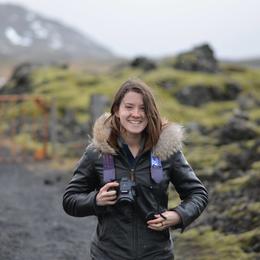If you have walked past the Richardson Bay Audubon Center & Sanctuary sometime over the past year, you may have noticed a new addition to our hillside: a slender radio tower with 4 antennae facing out toward Richardson Bay. Last July we completed the installation of our new Motus station! Motus Wildlife Tracking System (or Motus for short) is a technology that helps scientists and researchers track the movement of animals to better understand migration patterns and how they respond to environmental changes. This technology is collaborative in nature, so all stations across the network work together to pick up signals and share the data with the community.
The process of tracking a bird is relatively simple. A scientist will capture a bird and affix a small radio tracker to its back. This can be glued on for short-term, temporary tracking or placed on the bird via a small “backpack” for longer-term use. The bird is then released and the network of Motus stations begins its work to track the bird’s movement patterns. Motus towers along the bird’s migration route will automatically pick up the radio signal from the tag and upload the data to an online database. This creates a connect-the-dots map of Motus stations along the migration route. Information is even gathered on how long the tagged bird was within range of any given radio tower!
On May 27, 2023, our Motus station had its first ping after almost one year of searching the radio waves! A Red Knot, tagged in northwest Mexico on April 24th, flew by our tower and was in the area around Richardson Bay for just 2 minutes and 39 seconds while on its way to Washington State! You can view its full journey here. The researcher that tagged it is Julián Garcia Walther, a Ph.D. student studying this uncommon subspecies of Red Knot, Calidris canutus roselaari. According to Julián, detecting the bird at Richardson Bay was anomalous — Red Knots spend the winter in western Mexico before heading to the Arctic to breed, and the bird that flew past our tower was quite the outlier. Perhaps it was aiming to be fashionably late!
Red Knots can be described as plump, neatly proportioned sandpipers. While in their breeding plumage, they can be identified by their terracotta-orange underparts and intricate gold, buff, rufous, and black upperparts. The nonbreeding plumage is indistinct with gray above, gray barring on the flanks and faint vertical barring on the chest. On the west coast of North America, Red Knots spend their winters in South America and migrate to the High Arctic to breed. The nuances of this exceptional migration journey are being discovered through the power of the Motus station network! We are learning how long it takes individuals to complete their journey and determine which locations they are using as stopovers to fuel up along the way. All of this information can be used to help protect the Red Knot in all habitats it uses throughout its life.





